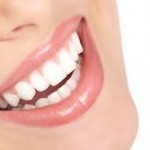 Dreaming about a flashing, white smile?
Dreaming about a flashing, white smile?
If you visit a drugstore and see the wide variety of teeth whitening products available, you already know obtaining that smile is easier and more affordable than ever. But you probably stand there wondering what works?
Today, there are three common approaches to whiten teeth:
- Over-the-counter products: white strips and trays; whitening toothpaste, floss, and mouth rinse; gum or breath strips
- 2. Professional take-home (or online) products
- 3. Professional in-office procedures
Before you decide which choice is best for you, it’s a good idea to know some facts about teeth, and specifically, YOUR teeth.
The Skinny on Teeth
The top surface of your tooth is enamel, a clear or translucent layer. The next layer is dentin–typically yellow, but it also can be grey, brown or black. This hue penetrates through the enamel and displays the natural color of your teeth.
As you age, your pearly whites will begin to darken due to a variety of causes such as:
- genetics
- staining substances such as smoking, coffee, tea, and colas
- old fillings
- antibiotic staining
- excessive fluoride
Fortunately, there’s a fast, safe technique for making teeth appear white again, without damaging the tooth structure. And the technique isn’t new. It’s old-fashioned bleaching.
The reason why bleaching doesn’t harm the structure of teeth is because enamel is porous. When you place Hydrogen Peroxide—or similar chemical bleaching solution–on the surface of tooth enamel, its pores will open and allow the solution to penetrate down to the layer of dentin. Once the solution has reached the dentin, the solution will start to bleach the dentin, resulting in the appearance of whiter teeth.
Now that you know how the whitening process works on healthy teeth, you should know that it does NOT work on dental fillings, crowns, and bonding. People who have had root canals, people with hypersensitive teeth, and pregnant women also should double-check with their dentist before whitening their teeth.
In Part 2 of this article, we’ll discuss Over The Counter, Professional, Take-Home, Online and In-Office whitening products and procedures, for you to compare.
Whitening products tend to produce the best results on teeth with a natural yellow hue rather than with a grey or brown hue. Although results are usually quick, it may take several treatments before you achieve your whitest smile. Of course, your dentist or endodontist can make recommendations on teeth whitening – just ask!
